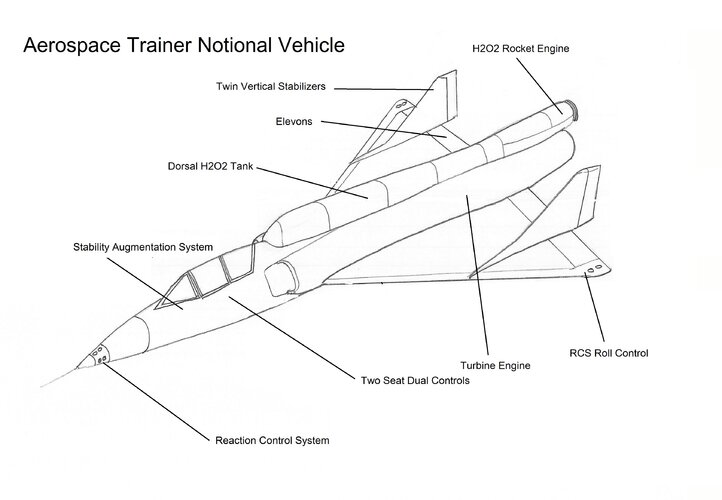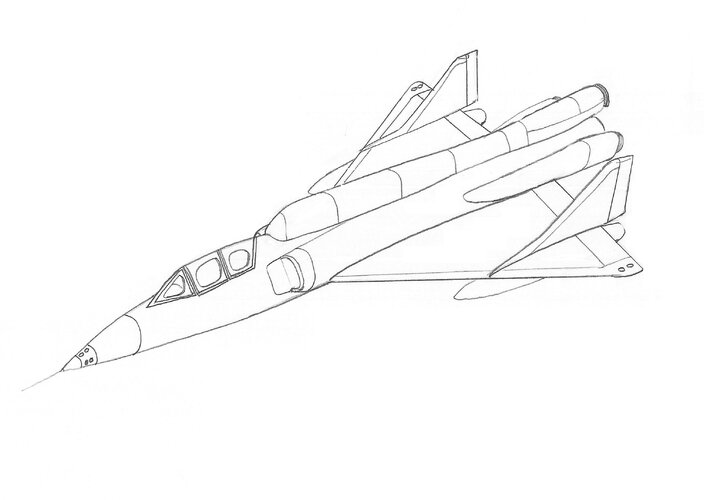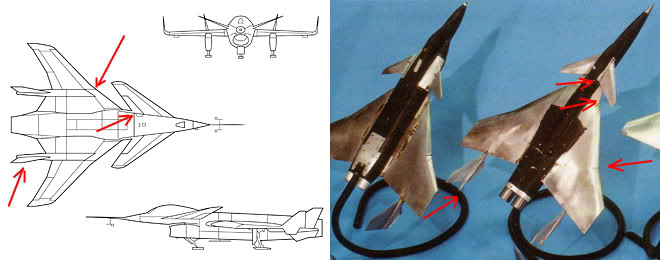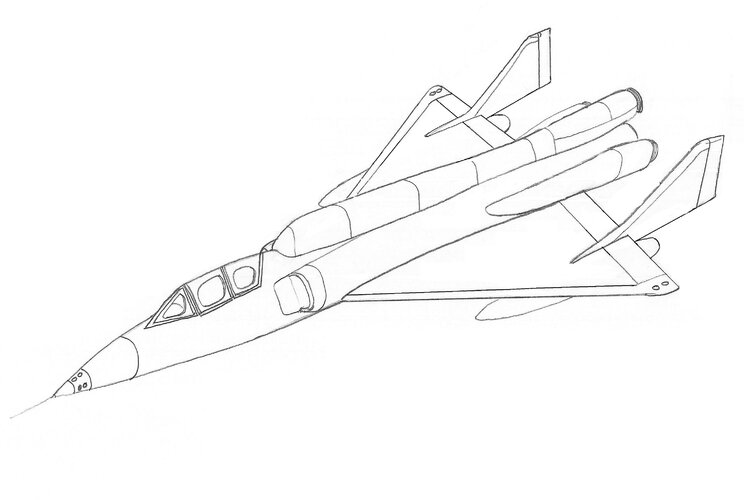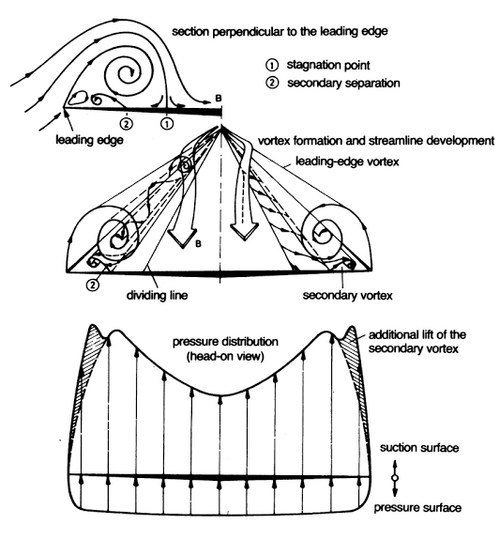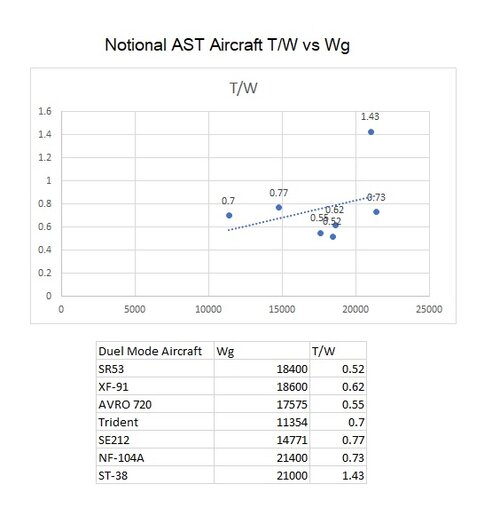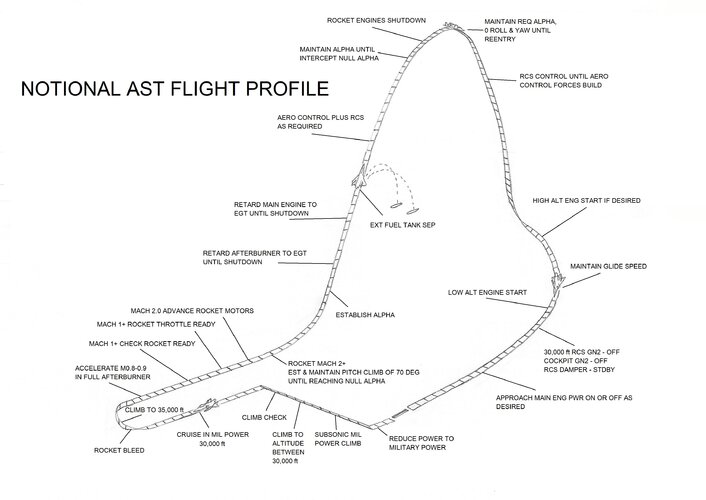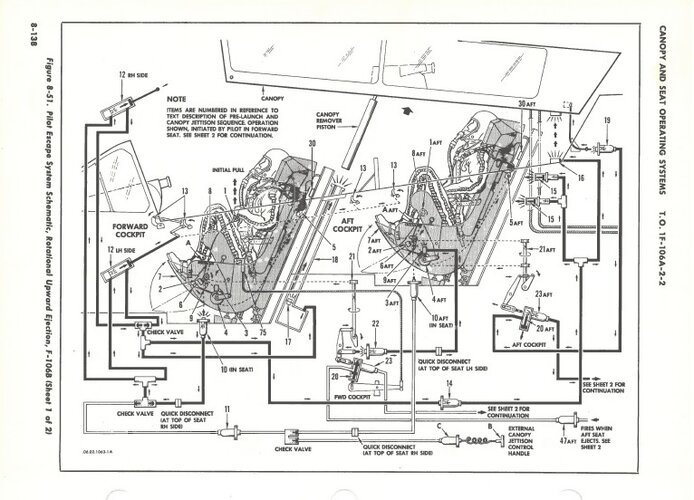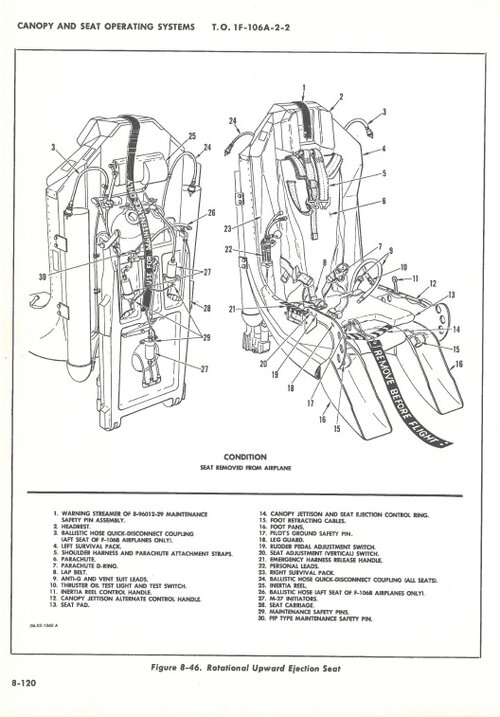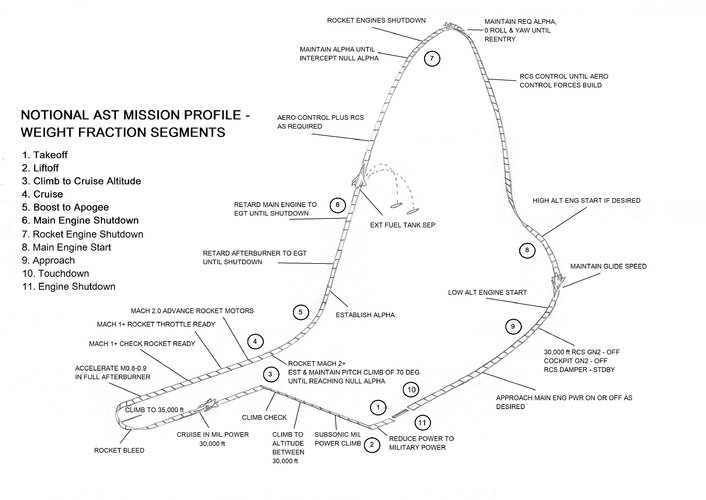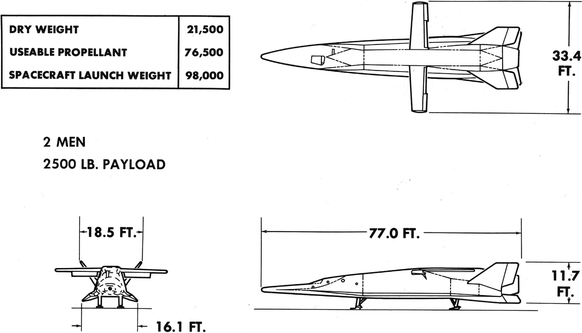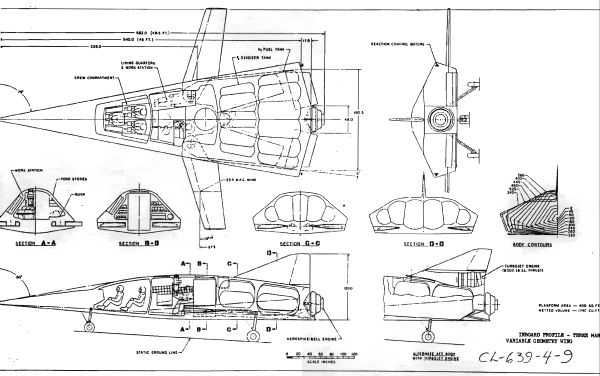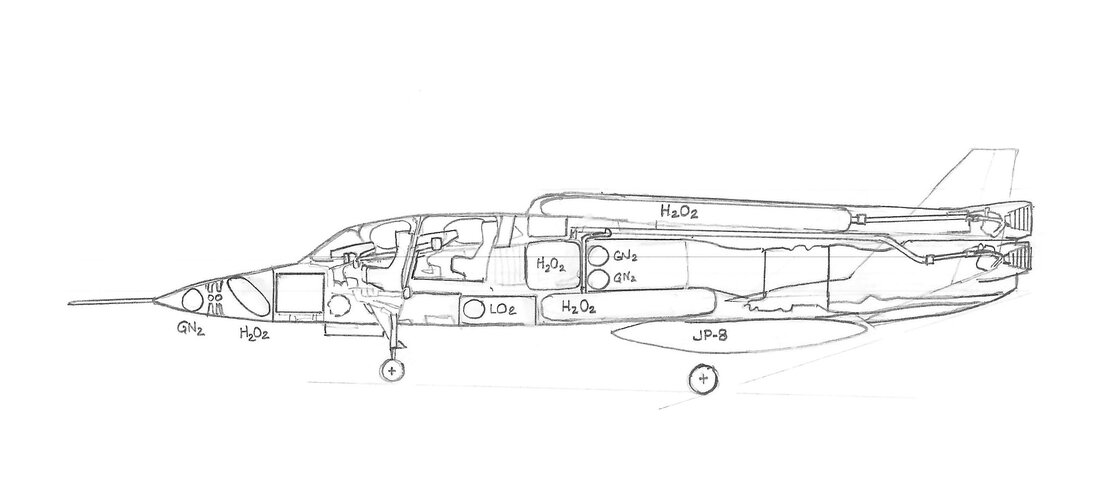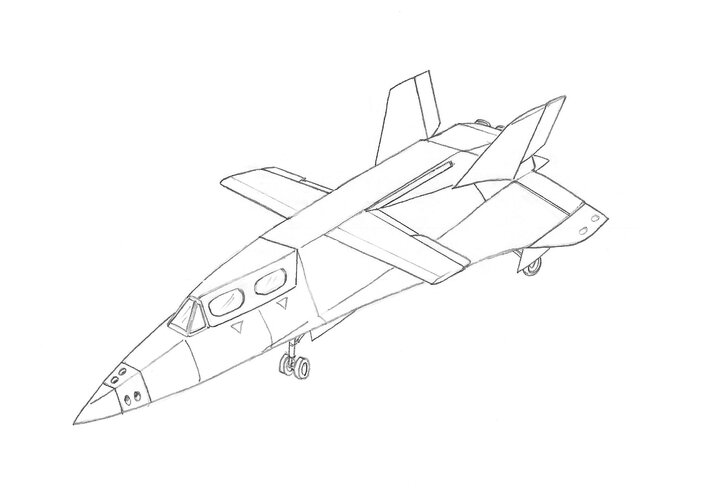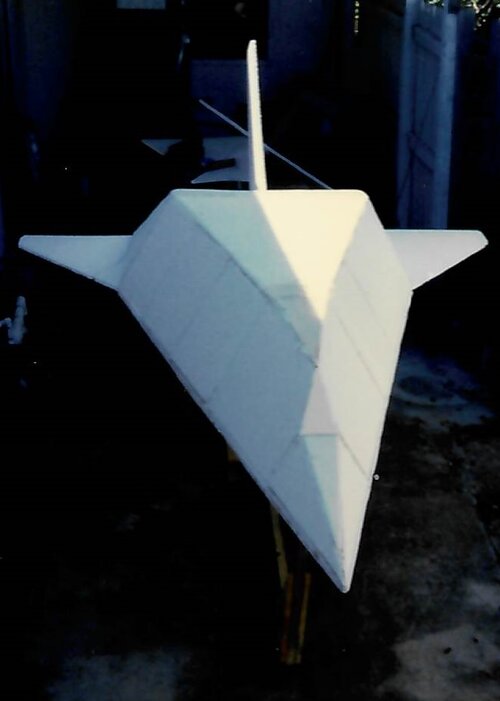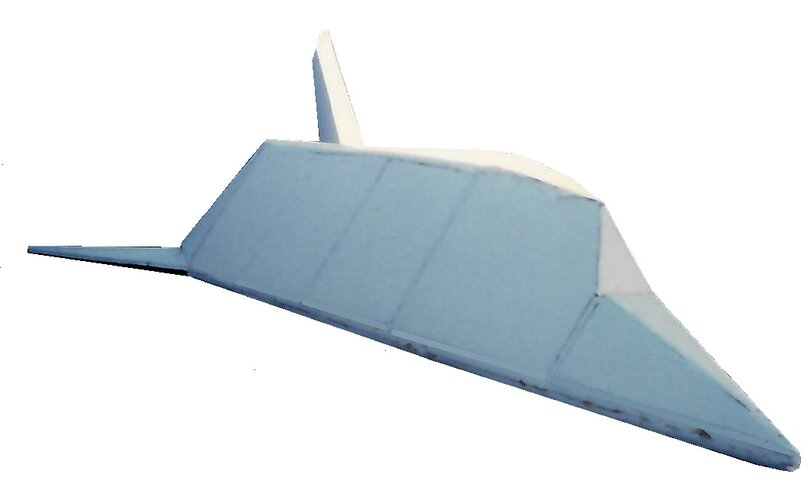- Joined
- 29 July 2009
- Messages
- 1,770
- Reaction score
- 2,480
Looking at Spaceship One, Spaceship Two, Dream Chaser, XCOR Lynx, and the NF-104A I thought that it would be interesting to create a general specification for an aerospace rocket trainer with the capability to fly between 120,000 to 360,000 ft. that could be used by space tourism companies for training, lower-cost space experiences, or marketed towards test pilot schools (i.e. USAF TPS, USN TPS, Empire TPS, EPNER, and Fedotov TPS). The design would allow pilots to build up to the altitudes, speeds, and piloting skills using reaction controls systems in a parabolic trajectory.
The drawing below is for a notional design using a Convair F-106B whose performance previously allowed it to fly Mach 2.3 with a J-75 (24,500 lb st thrust) engine.
The drawing below is for a notional design using a Convair F-106B whose performance previously allowed it to fly Mach 2.3 with a J-75 (24,500 lb st thrust) engine.

